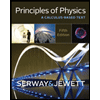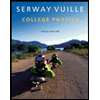In a downhill ski race surprisingly little advantage is gained by getting a running start. This is because the initial kinetic energy is small compared with the gain in gravitational potential energy even on small hills. To demonstrate this, find the final speed and the time taken for a skier who skies 65.0 m along a 35° slope neglecting friction for the following two cases. (Note that this time difference can be very significant in competitive events so it is still worthwhile to get a running start.)(a) starting from restfinal speed m/stime taken s(b) starting with an initial speed of 2.00 m/sfinal speed m/stime taken s
Kinematics
A machine is a device that accepts energy in some available form and utilizes it to do a type of work. Energy, work, or power has to be transferred from one mechanical part to another to run a machine. While the transfer of energy between two machine parts, those two parts experience a relative motion with each other. Studying such relative motions is termed kinematics.
Kinetic Energy and Work-Energy Theorem
In physics, work is the product of the net force in direction of the displacement and the magnitude of this displacement or it can also be defined as the energy transfer of an object when it is moved for a distance due to the forces acting on it in the direction of displacement and perpendicular to the displacement which is called the normal force. Energy is the capacity of any object doing work. The SI unit of work is joule and energy is Joule. This principle follows the second law of Newton's law of motion where the net force causes the acceleration of an object. The force of gravity which is downward force and the normal force acting on an object which is perpendicular to the object are equal in magnitude but opposite to the direction, so while determining the net force, these two components cancel out. The net force is the horizontal component of the force and in our explanation, we consider everything as frictionless surface since friction should also be calculated while called the work-energy component of the object. The two most basics of energy classification are potential energy and kinetic energy. There are various kinds of kinetic energy like chemical, mechanical, thermal, nuclear, electrical, radiant energy, and so on. The work is done when there is a change in energy and it mainly depends on the application of force and movement of the object. Let us say how much work is needed to lift a 5kg ball 5m high. Work is mathematically represented as Force ×Displacement. So it will be 5kg times the gravitational constant on earth and the distance moved by the object. Wnet=Fnet times Displacement.
In a downhill ski race surprisingly little advantage is gained by getting a running start. This is because the initial kinetic energy is small compared with the gain in gravitational potential energy even on small hills. To demonstrate this, find the final speed and the time taken for a skier who skies 65.0 m along a 35° slope neglecting friction for the following two cases. (Note that this time difference can be very significant in competitive events so it is still worthwhile to get a running start.)(a) starting from rest
final speed
m/s
time taken
s
(b) starting with an initial speed of 2.00 m/s
final speed
m/s
time taken
s
Trending now
This is a popular solution!
Step by step
Solved in 5 steps with 4 images









